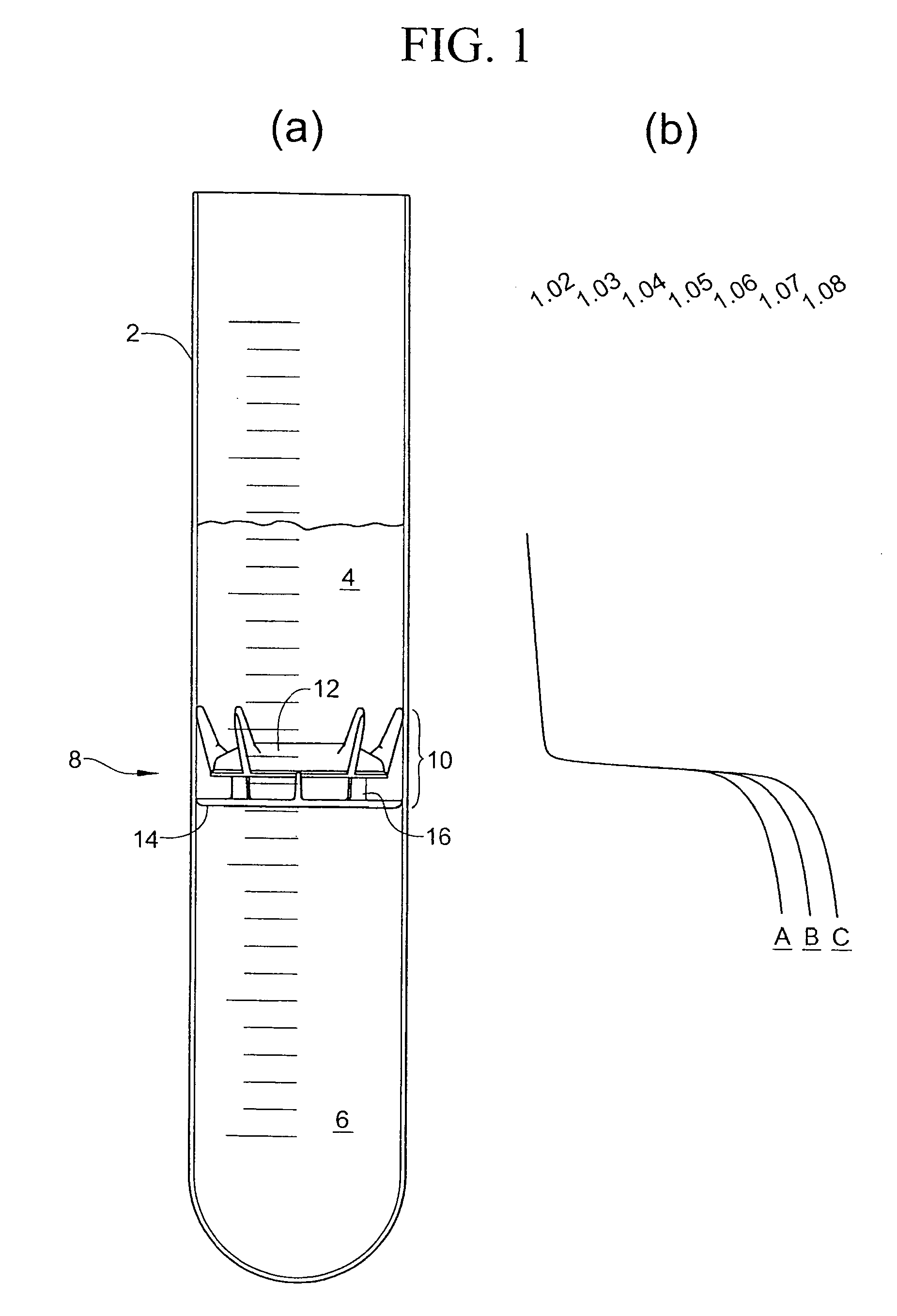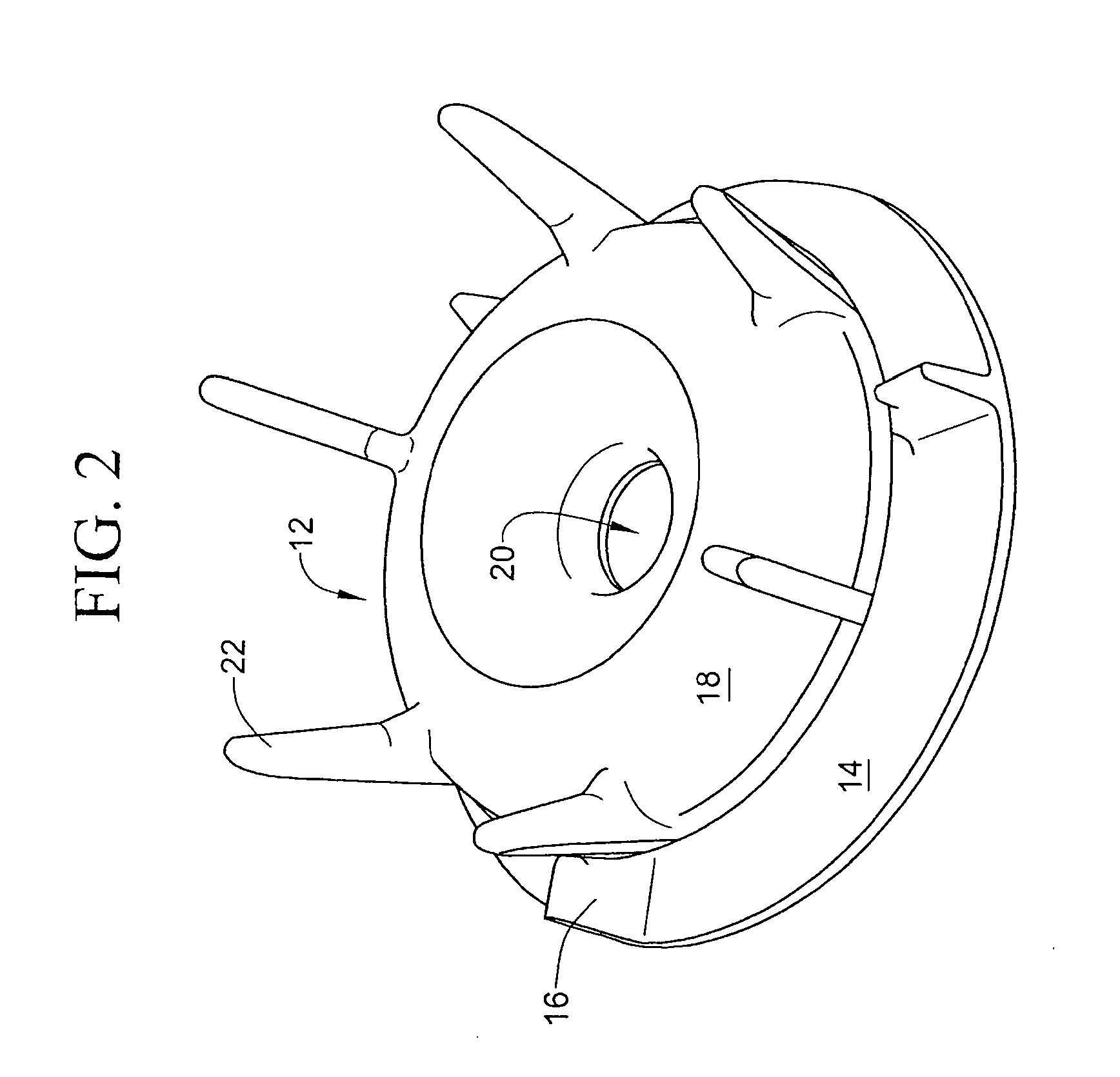Floating disk for separating blood components
a floating disk and blood component technology, applied in separation processes, laboratory glassware, centrifuges, etc., can solve the problems of significant affecting the recovery rate, difficult to determine the density of the red blood cell layer that develops during centrifugation with precision, and differences in the recovery rate as much as fifty percent, so as to minimize the difference, minimize the vertical difference, and minimize the amount of other cells
- Summary
- Abstract
- Description
- Claims
- Application Information
AI Technical Summary
Benefits of technology
Problems solved by technology
Method used
Image
Examples
Embodiment Construction
With reference to figure la, a processing tube 2 has a physiological fluid therein. The processing tube 2 is illustrated as a simple cylindrical tube, but it will be appreciated that it can take any of various shapes. In a preferred embodiment, the processing tube 2 is one chamber of a two-chamber processing disposable such as that shown in U.S. Pat. No. 6,398,972. Alternatively, the processing tube 2 is part of a syringe arranged to express the separated components through one end of the syringe or to separate the supernatant in other ways. The processing tube is typically cylindrical whereby a circular floating disk of fixed diameter is freely movable in the tube to assume a location at the interface between components to be separated. Other configurations utilizing the principles of the invention are possible.
The physiological fluid in the processing tube 2 of FIG. 1a is shown after it has been subjected to centrifugation to separate the several components according to their dens...
PUM
| Property | Measurement | Unit |
|---|---|---|
| mass | aaaaa | aaaaa |
| total mass | aaaaa | aaaaa |
| stability | aaaaa | aaaaa |
Abstract
Description
Claims
Application Information
 Login to View More
Login to View More - R&D
- Intellectual Property
- Life Sciences
- Materials
- Tech Scout
- Unparalleled Data Quality
- Higher Quality Content
- 60% Fewer Hallucinations
Browse by: Latest US Patents, China's latest patents, Technical Efficacy Thesaurus, Application Domain, Technology Topic, Popular Technical Reports.
© 2025 PatSnap. All rights reserved.Legal|Privacy policy|Modern Slavery Act Transparency Statement|Sitemap|About US| Contact US: help@patsnap.com



